Mary McAuley built a career off of her knack for wine. The established sommelier mosied the floor at restaurants like Danny Meyer’s critically acclaimed Maialino, using her advanced palate to aid customers with their wine choices throughout the meal. It was a career she enjoyed—and one she excelled at—until she decided it was time to take the next step.
In the early 2010s, McAuley began the blueprint for what would become her very own wine brand. By 2013, her brand, Ripe Life Wines, was fully operational. But still, the journey to today—one where she sells wine direct-to-consumer—was not an easy one, but it is a journey that came to define McAuley’s wine as her own. It’s affordable, sustainable and, above all, delicious. This is Ripe Life Wines.
Ripe Life Wines: The R&D Years
It all started drinking with friends. McAuley, a Jersey Shore girl at heart, noticed the growing popularity of what she calls “beachy” wines. Think Barefoot, Seaglass and so on. “I noticed all of these people buying beachy labels,” she tells me, “I thought to myself, ‘what if we made a beachy wine that was actually good?’” And so, the early blueprints of Ripe Life Wines were formed.
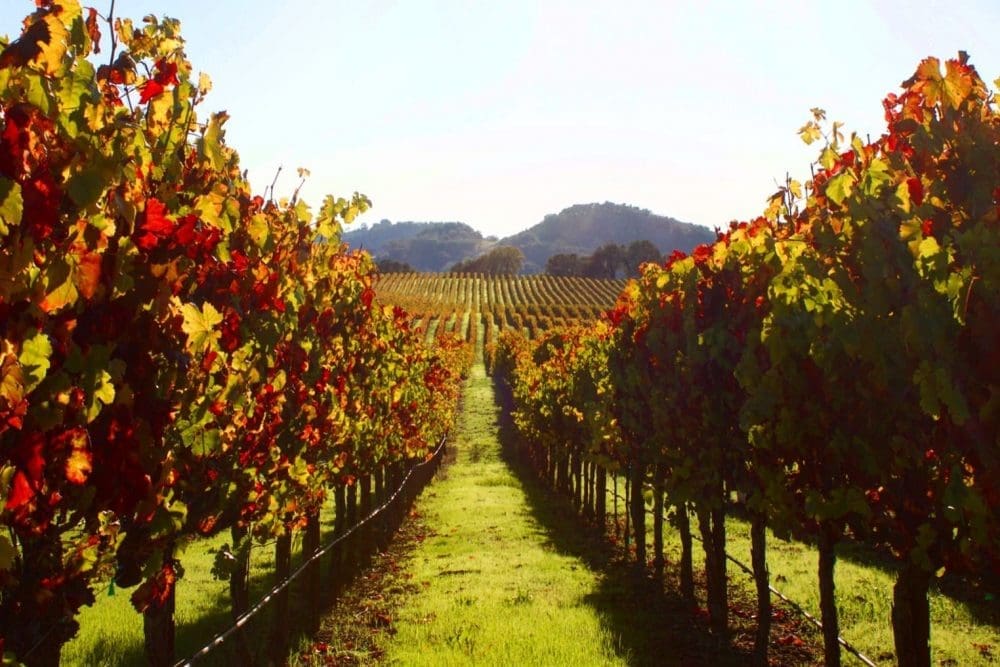
McAuley began research into wine production, regions and vineyards, eventually settling on Sonoma County, California as the source for her wine production. She knew she wanted to work with Chardonnay and Pinot Noir as her primary grapes, which are grown in abundance in Mendocino. From there, it came time to look for a vineyard to purchase them from. Sustainability was a must as was the overall quality of the vineyard grounds.
McAuley pulled out a Dan Barber quote to drive this point home: “When you are chasing after the best flavor, you are chasing after the best ingredients, and when you’re chasing after the best ingredients, you’re in search of great farming.” This ethos is blatantly apparent today.
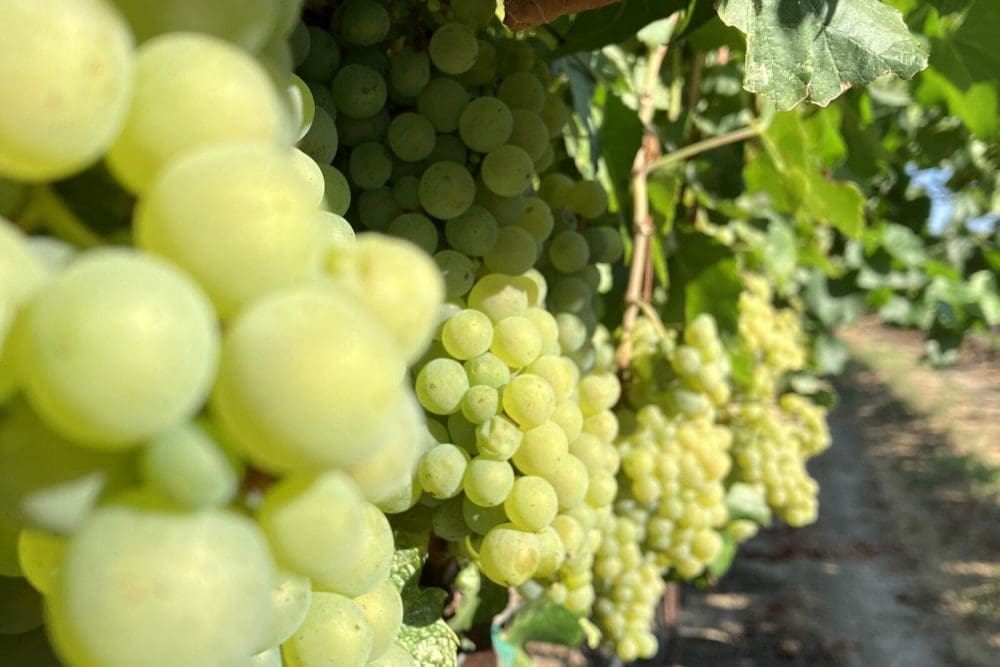
Through lots of testing and research—and with this concept in mind—McAuley eventually settled on Johnson Family Vineyards for the production of her grapes. Still, there was a way to go until Ripe Life Wines took form. The wine may be made in California, but McAuley was adamant that she wanted it to be unique from other wines coming out of the region. Ripe Life Wines was to be, as she puts it, “a California craft winery with a Jersey Shore soul.” Head winemakers Jason Driscoll and David Sundberg were able to work with this concept.
To achieve this, it starts with the wine itself.
Clambake Chardonnay
In 2012, McAuley harvested and bottled her first-ever vintage of chardonnay. Differing from many of the buttery, oaked offerings you’ll find nowadays, her chardonnay is aged in stainless steel, lending a clean taste and a bright pop of acidity. The name, “Clambake,” was McAuley’s homage to her summers growing up at the Jersey Shore—which included plenty of clambakes. “I made the wine that I wanted to drink at clambakes,” she told me. Simple enough.
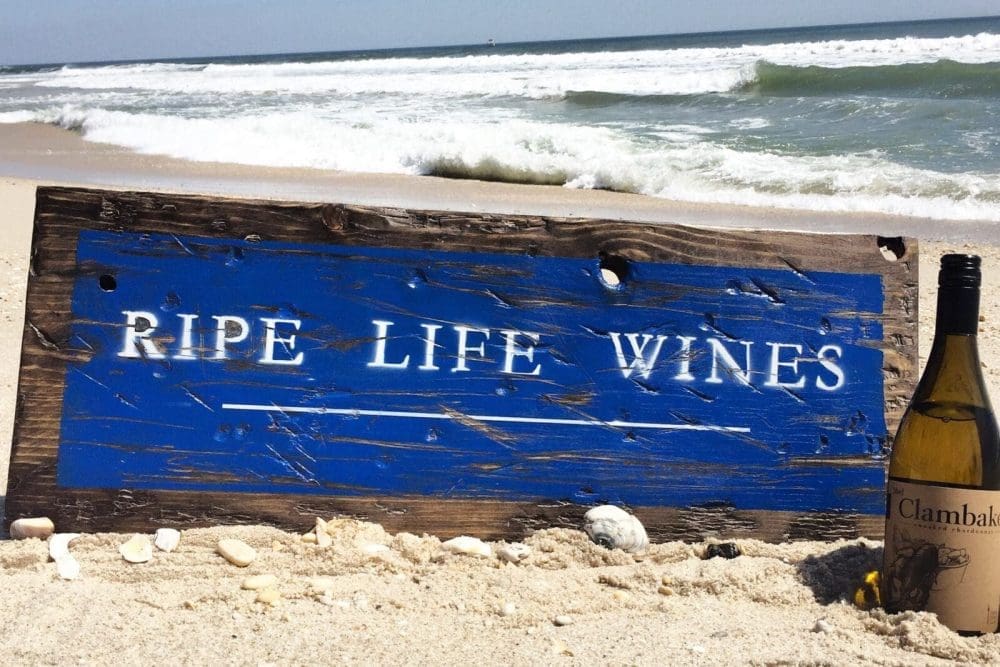
The unoaked chardonnay has plenty of lemon peel and green apple notes on both the nose and the palate. A hint of florality brings it all together. It is a lighter-bodied wine than many other California chardonnays, and as so, is a perfect way to get into the groove of a meal. The high acidity gets your palate ready to eat. As such, it is an excellent pairing with sushi, fried fish, chicken and, of course, a clambake.
Remember, this isn’t your typical, in-your-face, buttery chardonnay. Pinot Grigio, Sauvignon Blanc and even Vinho Verde drinkers will find a home in this bottle.
Clambake Rosé
To understand Ripe Life Wines’ Clambake Rosé, you must first understand rosé itself. Traditionally, rosé is made using red grapes. Because the color in grapes comes from the skin, the skins are left in tact for the juicing process, but for a briefer period than a red wine would. McAuley explained to me that this is the only way she will ever do rosé, and if there happens to be a low yield one year, they will never supplement it by cutting corners. Many winemakers in the New World (anywhere outside of Europe or the Middle East) blend white and red wines to produce rosé, or even use artificial dyes in the process. However, this process is banned in most of the Old World regions, and McAuley prefers to stick to the roots of winemaking at least in that regard.
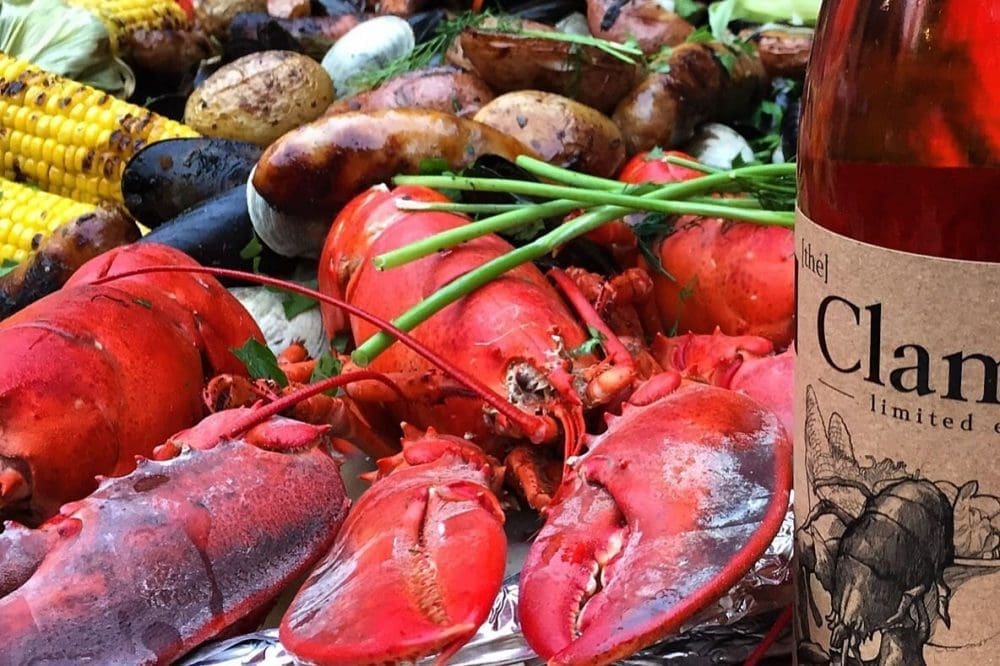
The Clambake Rosé is made with 100 percent pinot noir grapes. The grapes are harvested underripe, lending a dry rosé with notes of cherry, pomegranate and white peach. I found this wine to evolve as I drank it, especially when paired with food. A perfect match for fried seafood, chicken, peppery arugula salads and even pork. Honestly, this was such a great “eating wine” as they call it, that I think I could find a way to pair it well with most foods.
It serves as a great beach wine for hot summer days, or as a base for a sangria. There are really no limits for this incredibly versatile offering from Ripe Life Wines. As winemaker Driscoll says, “don’t let the lobster on the label confuse you, this wine is gangster.”
Moules Blanc de Blanc Sparkling
In 2018, McAuley, a lover of Champagne, finally started producing her own sparkling wine. This is the only bottle in her catalog not produced through Johnson Family Vineyard. Instead, Moules was conceptualized during an externship at Schramsberg Vineyards—one of the top sparkling winemakers in the US. The chardonnay used for Moules is purchased from an independent grower.
The term “blanc de blanc” simply means a white wine made from white grapes. In this case, Moules is made from 100 percent chardonnay. McAuley kept the beach theme with the label and name, but she decided to name it in French rather than English because of the wines method. Ripe Life Wines employs what’s known in the industry as “méthode champenoise,” a method for making sparkling wine where all of the fermentation is done in the bottle. This labor-intensive process lends a creamy texture and ultra-fine bubbles to the wine—something that is sought after in sparkling varieties.
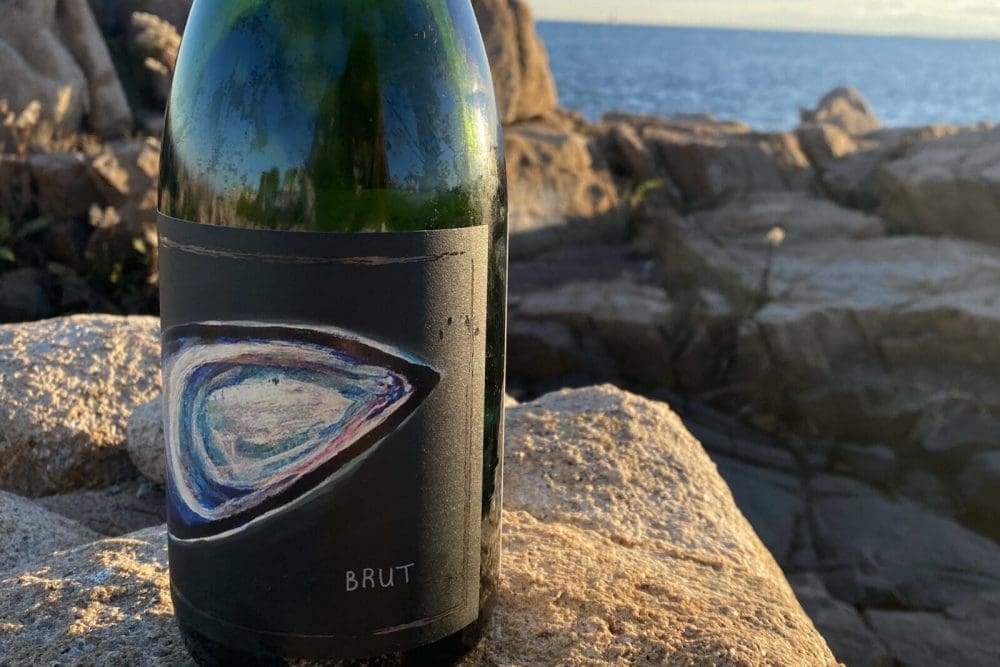
Moules is incredibly delicious with plenty of notes of lemon, green apple and brioche. It is a perfect harmony for briny oysters, mussels, salty snacks, mushrooms and more. It is Ripe Life Wines’ most expensive bottle at $40, but you’ll be hard-pressed to find a better deal on a Champagne-method wine in the US.
The Fisherman’s Red
McAuley wasn’t going to produce a red wine—until she got tired of people begging her to. Her 100 percent pinot noir is light-bodied with a beautiful ruby hue. It is slightly earthy with a hint of mushroom but backed up by red fruits, citrus and vanilla.
This is a great pairing for chicken, pork, mushrooms and even fish. Unlike many other reds, it is low in tannin and mellow on the back end, making it a great match for several seafood dishes. Try it with broiled salmon or grilled tuna—it isn’t called the Fisherman’s Red for nothing.

The label also differs from McAuley’s other bottles, designed in collaboration with Maine-based artist, Ty Williams, who also did much of the artwork at Spring Lake Seafood—one of Ripe Life Wines’ tasting rooms.
A New Kind of Wine Concept
Like most budding wine brands, Ripe Life Wines began in 2013 with the idea of breaking into the retail space. The three-tier system—which has become the American model for wine—is a system in which wine passes through three tiers before reaching the customer. It goes from the producer (or importer) to the distributor and finally, to the store shelves. However, McAuley soon realized that this system was actually hurting her more than it was helping. “It just became impossible. Retail beats you up on price,” she told me, “they’ll [a store] say they carry my wine when they don’t. They would just place an order when someone wanted it.”
This meant that Ripe Life Wines wasn’t selling nearly as much as they needed to. Beyond that, McAuley saw distributors steering away from her original goals to try to create more demand. She eventually shifted her focus toward restaurants while still using distributors. It worked a tad better for sales, but still, she faced immense pressure to change her wines, something she has since vowed never to do again.
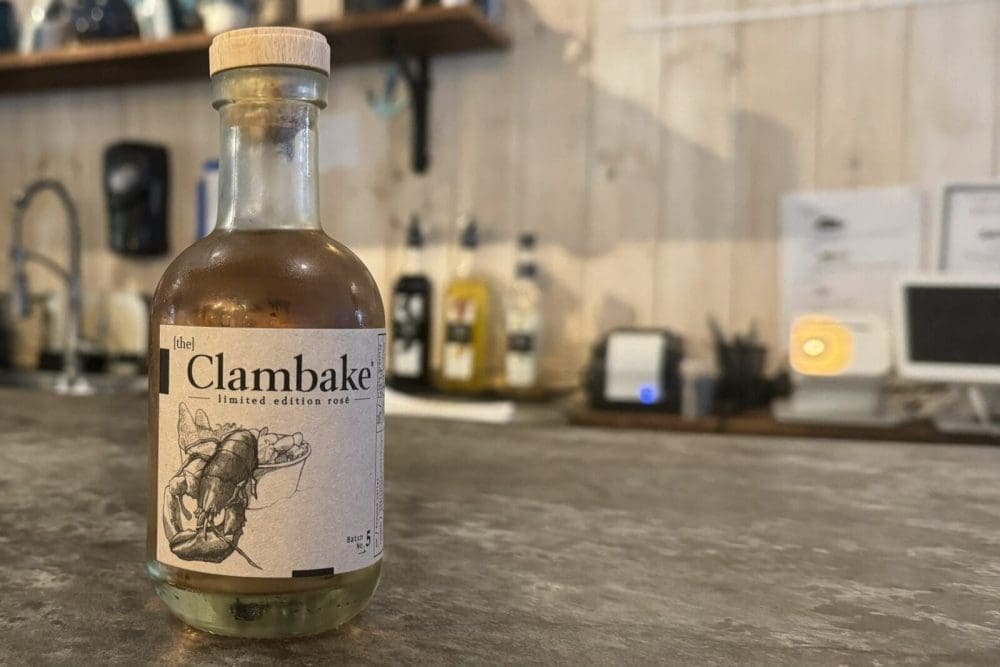
McAuley’s final hand to play—and the one she operates under today—was to sell her wines direct-to-consumer. This means that to purchase her wine, you buy it directly from her site, or in one of her tasting rooms. This structure created an alternate source of sales and one that is uniquely New Jersey: BYO restaurants. Under NJ law, McAuley is allowed to rent space at BYO restaurants and sell her wine. It’s a three-way transactional exchange—McAuley pays a restaurant to carry her product, she sells it to customers, and the sales go directly to the brand.
Where to Buy Ripe Life Wines
You can see this concept in full effect at Spring Lake Seafood in Spring Lake, NJ, where Ripe Life Wines has found a comfortable home. Because her wines are designed with a beachy feel—and pair all the same—Spring Lake Seafood’s oceanic menu is a perfect match for the product. Try the Clambake Rosé with the fluke Milanese, or the Moules Blanc de Blanc with Mussels (obviously).
Ripe Life Wines rents another space at Dock and Claw in Beach Haven, NJ—a 50-year-old clam bar on Long Beach Island, where McAuley’s wine pairs exceptionally well with items such as the fish tacos, halibut risotto and anything off of the raw bar.
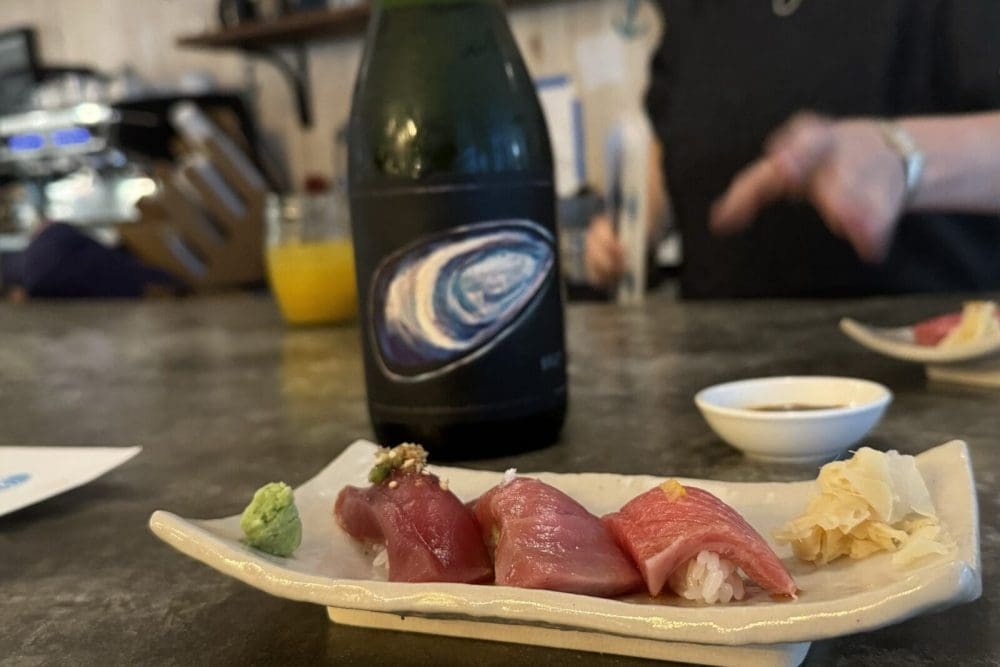
In Wyckoff, Willow and Whisk—one of NJ’s best brunch spots—is carrying Ripe Life Wines. Guests can add a bottle to their breakfast or brunch spread. Want a mimosa? You know what to do.
McAuley also revealed plans to establish a tasting room at Forty North Oyster Farm’s dock and dine space on the Barnegat Bay.
The Moules Blanc de Blanc, Fisherman’s Red and both Clambake wines are available to purchase by the bottle at any of Ripe Life Wines’ tasting rooms. For the Clambake line, McAuley employs a loophole to sell “glasses” of wine (NJ state law requires only closed bottles to be sold in this outlet), by offering each in 6.3 oz bottles—which comes out to just under a glass and a half. The Fisherman’s Red is exclusive to her tasting rooms and unavailable online.
If you live in NJ, you can order wine online through Ripe Life Wines directly on Instagram. Shipping is free and full-case orders can be delivered the very next day.
If you live out-of-state, there’s still ways to get your hands on a bottle. Bottle Shop of Spring Lake carries Ripe Life Wines in their online shop and ships nationwide.
Ripe Life Wines: California Wine With a Jersey Shore Feel
Direct-to-consumer has been working better than McAuley could have ever expected, and it has allowed Ripe Life Wines to evolve into exactly the brand that she envisioned over a decade ago when studying the work of her favorite producers.
“I have control over my winery and my sales. I can’t wait to make a sweet wine, or things that people [distributors] told me aren’t marketable,” McAuley said with a smile on her face. She’s not cutting corners or taking the easy way out. At the end of the day, McAuley is bottling exactly the wine that she wants to drink. She just hopes people can appreciate it as much as she does.
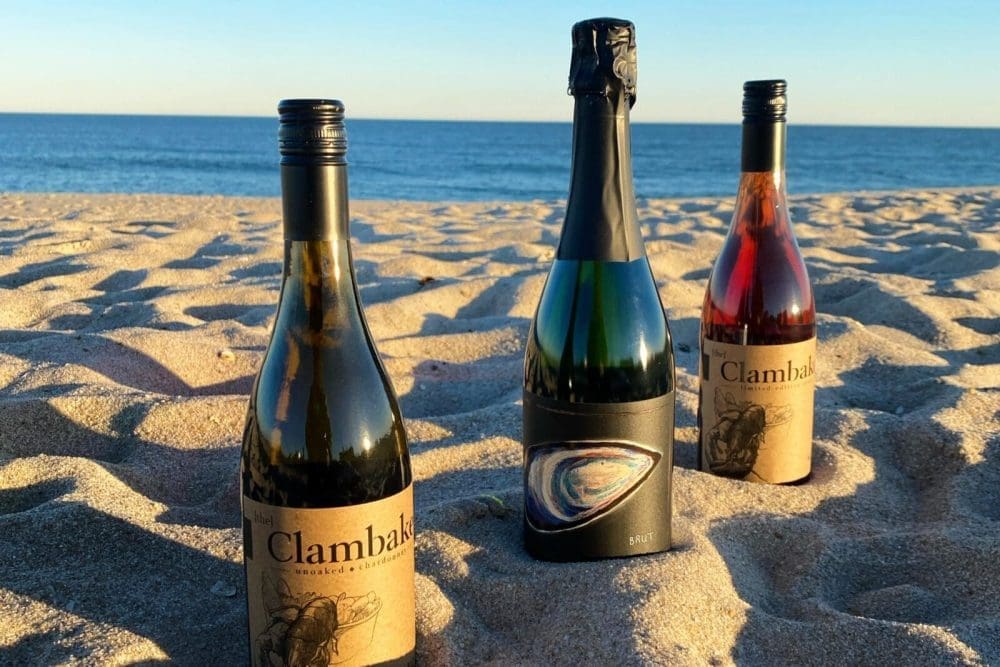
Ripe Life Wines started small and today, it still is. The brand operates firmly under the idea of quality over quantity. In the decade since its inception, McAuley has brought four unique wines to market and hopes to continue growing the catalog. Never again will she bottle to appease the three-tier system and you can be certain that any bottle of Ripe Life Wines that you open is going to offer premium quality at an affordable price.
When asked what the Ripe Life Wines motto is today, McAuley smirked and gave me a stern answer.
“No compromises. Ever.”
Peter Candia is the Food + Drink Editor at New Jersey Digest. A graduate of The Culinary Institute of America, Peter found a passion for writing midway through school and never looked back. He is a former line cook, server and bartender at top-rated restaurants in the tri-state area. In addition to food, Peter enjoys politics, music, sports and anything New Jersey.
- Peter Candiahttps://thedigestonline.com/author/petercandia/
- Peter Candiahttps://thedigestonline.com/author/petercandia/
- Peter Candiahttps://thedigestonline.com/author/petercandia/
- Peter Candiahttps://thedigestonline.com/author/petercandia/

